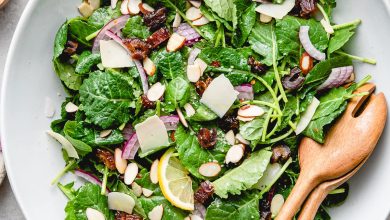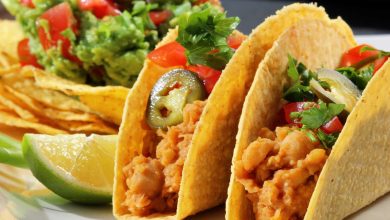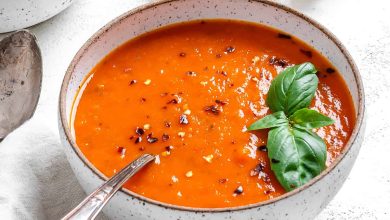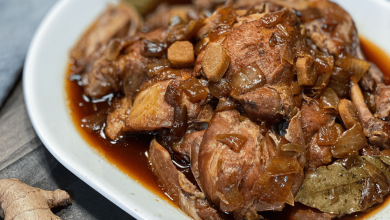Quick Stir Fry
Certainly! Let’s explore the world of Quick Stir Fry in a detailed manner, just as you requested.
What is Quick Stir Fry?
Quick Stir Fry is a popular cooking technique that originated in China and has since spread to various parts of the world. It involves cooking small pieces of meat, poultry, seafood, or tofu, along with vegetables, in a hot pan or wok. The ingredients are quickly stirred and tossed in a flavorful sauce, resulting in a delicious and fast-cooked dish.
History of Stir Fry:
Stir frying is believed to have originated in China over 1,500 years ago. It was originally developed as a way to quickly cook food over high heat, preserving its texture, color, and nutritional value. The technique gained popularity due to its efficiency and ability to create tasty dishes using minimal oil.
Components of Quick Stir Fry:
- Protein: You can use various proteins, such as thinly sliced chicken, beef, shrimp, tofu, or even a combination of these.
- Vegetables: Common vegetables include bell peppers, broccoli, carrots, snap peas, mushrooms, and onions. You can choose your favorites or what’s in season.
- Aromatics: Garlic, ginger, and scallions are often used to add depth of flavor.
- Sauce: A flavorful stir-fry sauce typically consists of soy sauce, oyster sauce, sesame oil, and other seasonings. You can also customize it to your taste.
Steps to Prepare Quick Stir Fry:
Here’s a step-by-step guide to preparing a quick stir fry:
Step 1: Preparation
- Cut all your ingredients into uniform-sized pieces for even cooking.
- Prepare your stir-fry sauce by mixing soy sauce, oyster sauce, sesame oil, and any other desired seasonings.
Step 2: Preheat the Pan
- Use a wok or a large, deep skillet.
- Heat it over high heat until it’s very hot.
Step 3: Sear the Protein
- Add a small amount of oil to the hot pan.
- Quickly sear the protein until it’s browned on all sides.
- Remove it from the pan and set it aside.
Step 4: Stir Fry Vegetables
- Add a bit more oil if needed.
- Start with aromatics like garlic and ginger, followed by harder vegetables like carrots and broccoli.
- Add softer vegetables as you go.
- Stir-fry them until they’re tender yet crisp.
Step 5: Combine and Sauce
- Return the seared protein to the pan.
- Pour in the stir-fry sauce and toss everything together.
- Cook for a few more minutes until the sauce thickens and coats the ingredients.
Step 6: Serve
- Serve your quick stir fry over steamed rice or noodles.
- Garnish with chopped scallions, sesame seeds, or cilantro if desired.
Time Needed:
The total time needed for preparing a quick stir fry typically ranges from 15 to 30 minutes, depending on your cooking skills and the specific ingredients used. The key to a quick stir fry is high heat and efficient preparation.
Now, you’re ready to create your own delicious quick stir fry with this comprehensive guide! Enjoy your culinary journey, and don’t forget to experiment with different ingredients and flavors to suit your taste preferences.
Of course, here are some general nutrition facts and health information for a typical Quick Stir Fry recipe. Keep in mind that specific values can vary depending on the ingredients and portion sizes used:
Nutrition Facts (Per Serving):
- Calories: Approximately 300-400 calories per serving, but this can vary widely depending on ingredients and portion sizes.
- Protein: Typically provides a good source of protein, with around 20-30 grams per serving, depending on the choice of protein (chicken, beef, tofu, etc.).
- Carbohydrates: About 20-30 grams of carbohydrates per serving, primarily from vegetables and, if included, rice or noodles.
- Fats: Generally contains around 10-15 grams of fat per serving, mainly from cooking oil and any added sauces.
Health Information:
-
Balanced Nutrition: Quick Stir Fry can be a balanced meal as it includes protein from meat, tofu, or seafood and a variety of vegetables, offering a good mix of vitamins and minerals.
-
Low in Saturated Fat: The use of minimal oil and lean proteins can make stir fry a low-saturated fat dish, which is beneficial for heart health.
-
High in Fiber: The inclusion of vegetables provides dietary fiber, which aids in digestion and can help with weight management.
-
Vitamins and Minerals: Quick Stir Fry is rich in essential vitamins and minerals, such as vitamin C from bell peppers and broccoli, and potassium from various vegetables.
-
Sodium Content: Be cautious about the sodium content, especially if you use soy sauce and other high-sodium seasonings in the stir-fry sauce. Consider using reduced-sodium soy sauce if you’re watching your sodium intake.
-
Calorie Control: While stir fry can be a nutritious option, the total calories can vary significantly based on ingredients and portion sizes. If you’re concerned about calorie intake, be mindful of the amount of oil and sauces used.
-
Customization: One of the advantages of stir fry is its flexibility. You can customize it to meet your dietary preferences and restrictions. For example, you can opt for brown rice for added fiber or use tofu for a plant-based protein option.
-
Moderation: Like any dish, moderation is key. Eating stir fry in moderation as part of a well-balanced diet can be a healthy choice.
Remember that the nutritional value of your stir fry can change based on your ingredient choices, cooking methods, and portion sizes. To get the most accurate nutritional information, consider using a nutrition calculator or consulting with a registered dietitian, especially if you have specific dietary goals or health concerns.








